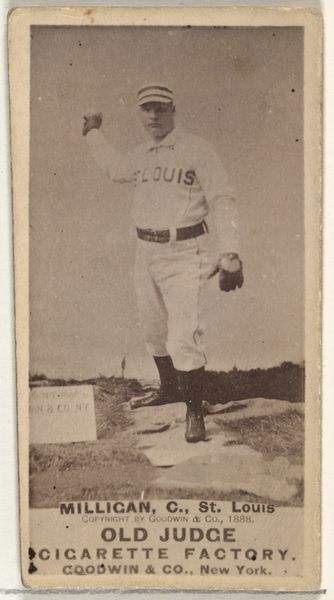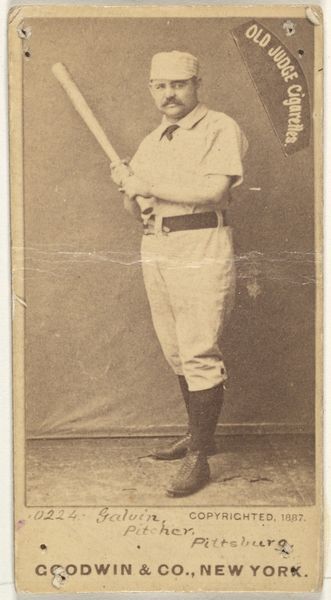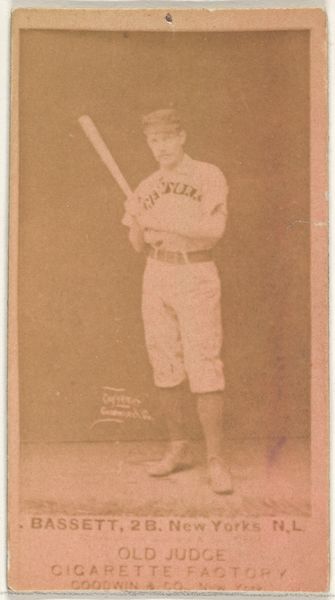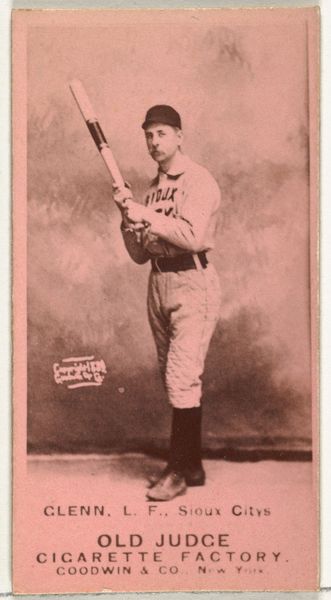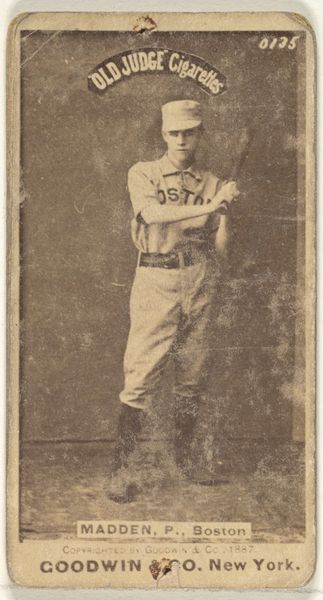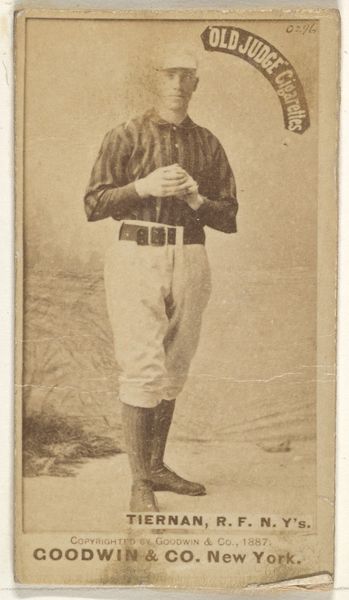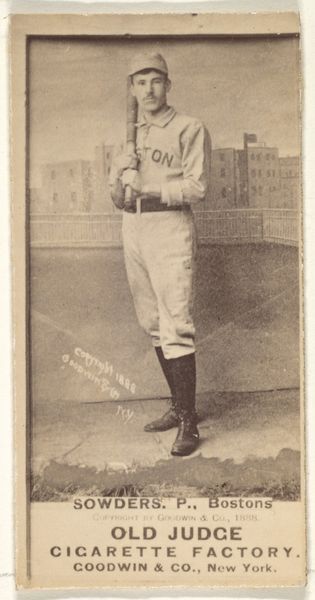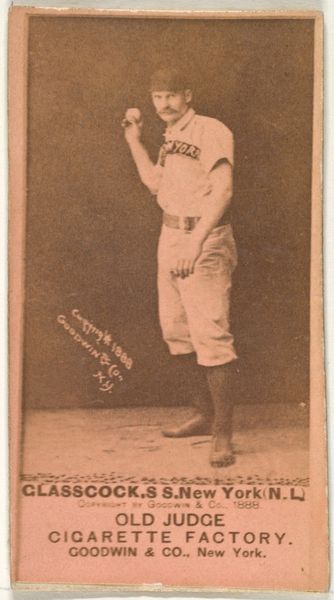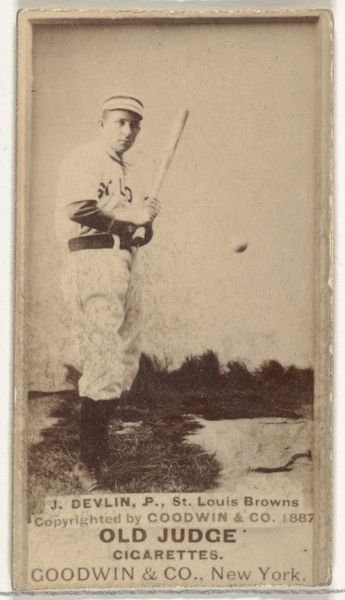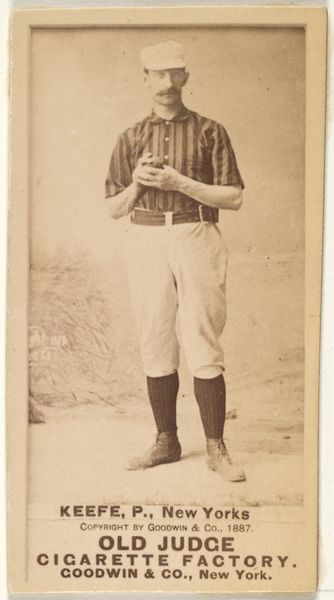
print, photography, gelatin-silver-print
#
portrait
#
print photography
#
contemporary
# print
#
photography
#
gelatin-silver-print
Dimensions: image: 8 × 5.5 cm (3 1/8 × 2 3/16 in.) sheet: 8.9 × 6.3 cm (3 1/2 × 2 1/2 in.)
Copyright: National Gallery of Art: CC0 1.0
Editor: This is "Jim Dow", a 1975 gelatin-silver print by Mike Mandel. There’s something very familiar about this portrait... the ball cap, the t-shirt, the glasses, the smile. How do you interpret this work? Curator: I see a layering of American cultural iconography, almost like a visual code needing to be deciphered. The Red Sox cap suggests New England, while the Florida t-shirt introduces a geographical tension, perhaps alluding to migration or personal history. Do you see these details operating as signifiers of identity? Editor: That's interesting. I was focusing on it being a portrait of an individual. The clothing reading almost like branding. Curator: Exactly. Branding, identity... It's about constructed personae. In the '70s, particularly in photography, artists were deeply engaged in deconstructing these visual languages. What happens when we treat identity as something curated, assembled through accessible symbols? Editor: So you're saying this portrait isn't just about capturing a likeness, but about showing how we all perform identity? How we choose symbols to communicate who we are, or want to be? Curator: Precisely! Consider how these specific choices—a baseball cap, a state tee—resonate with a shared cultural understanding. They tap into collective memories, triggering associations that build a narrative. What does this photograph say about the photographer's background? Is Mike Mandel also signalling? Editor: Wow, I hadn't considered the artist was sending messages! That puts a whole new spin on things. I initially saw a straightforward portrait, now I see so much more! Curator: Indeed. The photograph serves as a potent reminder that even seemingly simple images carry significant emotional, cultural, and psychological weight. And once seen, it is not easily unseen!
Comments
No comments
Be the first to comment and join the conversation on the ultimate creative platform.



